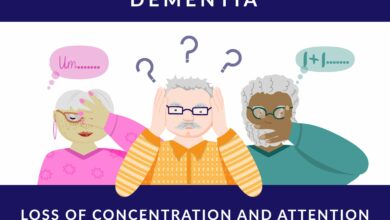A
A
A
Everyone has questions about the proper, safe level of alcohol consumption in daily life. We’ve heard that one drink per day offers certain benefits, and then we hear it said it’s better not to drink at all. There is no question that drinking too much is a dangerous practice that can wreak havoc on our health and well-being. But how much is too much? We’ll take a comprehensive look at healthy drinking.
Young people often socialize in ways that involve the consumption of adult beverages and it’s important to understand what level of alcohol is safe. You don’t have to drink to excess on a daily basis to experience negative consequences from overindulgence and it’s vital to know your limits and stick to them in every situation. The commonly accepted guidelines suggest that for a healthy man, up to two alcoholic beverages per day are safe, and for women, that number is one per day. One standard alcoholic drink consists of one 12-ounce beer, 5 ounces of wine, or 1.5 ounces of distilled spirits, or hard liquor.
Read More »
Exceeding the recommended guidelines for adult beverages can lead to very serious adverse reactions, including significant liver disease and damage. This damage results from the effects of too much consumption and over time this drinking begins to cause fat to build up around the liver, called fatty liver, which then causes inflammation that will progress unless behavior is changed. This liver damage may be irreversible or not, however the progression can be slowed down by altering or eliminating excessive consumption. The broad group of liver related risks of too much are under the umbrella term, “Alcohol-related liver disease,” often abbreviated ARLD. Other diseases under this umbrella are acute alcoholic hepatitis, which is the second stage of alcoholic liver disease, signified by increased liver inflammation, followed by the third stage, alcoholic cirrhosis, which presents with significant scarring of the liver and is the final, potentially fatal form of the disease process. Cirrhosis is the stage where the damage is permanent and cannot be corrected by treatment. The frightening fact is that these changes are often undetectable until the liver damage is significant, presenting with yellowing of the eyes, nausea, loss of appetite, jaundiced skin, abdominal pain, weight loss, dark bowel movements, agitation, as well as bleeding gums. The slow creep of ARLD makes maintaining careful control of your behavior incredibly important. If you follow the recommended levels of daily consumption, you can protect your health for your lifetime.
Too much consumption over time is also associated with the significant risk of developing chronic conditions, such as hypertension, or high blood pressure, as well as heart disease and digestive concerns. Excess use is also associated with elevated risk for cancer in various parts of the body, not only the liver, but also breast, throat, mouth, esophageal, stomach and colon cancers. It is abundantly clear that misuse and abuse of this substance is a dangerous practice when considering a person’s future well-being. Young people and old should always use good judgement when socializing and not succumb to the pressure to get intoxicated.
Keeping to safe guidelines actually may benefit a person’s well-being by offering certain protective effects. Limited consumption, instead of choosing to be a teetotaler, offers the opportunity to protect against heart disease or death from a cardiac event. Other possible benefits of following these guidelines include a lowered risk of ischemic stroke, possibly due to a reduced likelihood of forming blood clots, as well as potentially helping decrease the chances that you will develop diabetes. Not all of the benefits are fully understood yet, but these are well observed positives experienced by the majority of healthy people who practice moderate consumption of adult beverages. It has also been suggested that moderate consumption may increase acuity and slow cognitive decline as we age, as well. Excess also risks damage to mental stability and can cause quite extensive damage to memory.
Too much consumption is clearly not good for anyone’s body and well-being. Practicing good habits can ensure a continued healthy functioning and reduce the odds of developing preventable conditions that can be a threat to someone’s mental and physical standing. There is absolutely no harm in enjoying a single glass of wine or a beer or two on occasion. Too much is too much and can, consequently, result in lifelong damage to one’s future and end up causing irreversible damage to many areas of the body. It’s simply not worth that risk for most people. Getting drunk is not healthy and it’s important to maintain proper control of oneself when it comes to enjoying a night out or attending a party. Social lubricant may be a shot of whiskey or a toast with a beer from the draught. Going too far is never a good, fun activity. Consume responsibly






